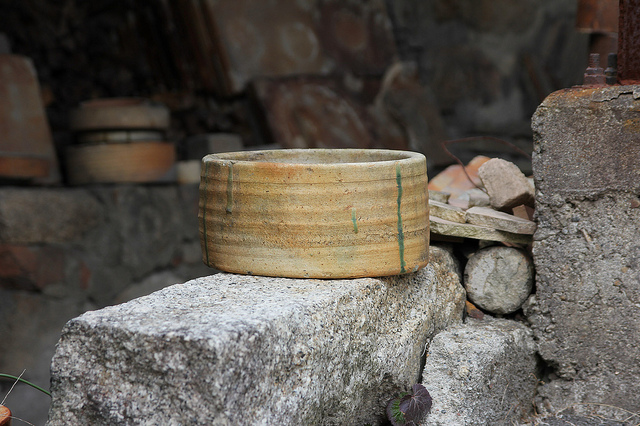Feb 01, 2018
Getting Potty About Pottery in Seto

Today Aichi is thought of as the industrial hub of Japan, with many of the nation’s top manufacturing companies based here. But did you know that this reputation goes back quite some time? To the early 13th century in fact…
The Birthplace of Japanese Ceramics
Although Japan has one of the oldest ceramic traditions in the world, with earthenwares being created as early as the Jōmon period (10,000–300 BCE), as a heavily wooded country most domestic utensils in Japan were made of either natural or lacquered wood. However, as Chinese fashions grew in popularity, the upper class of samurai’s desire to emulate their Chinese neighbors brought about a societal change that could also be seen in the development of ceramics, particularly for use in tea ceremonies.
After studying the manufacture of pottery in China, Katō Shirōzaemon, the father of Japanese ceramics also known as Tōshirō, searched for the ideal place to begin a Chinese-style pottery operation. Legend has it that one night a dog came to him in a dream and pointed out a spot in the south east of Seto in which to dig. When he awoke, he sought out the area that the nighttime apparition had shown him and found clay of the highest quality.
Prior to this time most Japanese ceramics were of unglazed varieties, but at Seto, using knowledge picked up in China, Shirōzaemon developed Japan’s first high-fired glazed ceramics in 1223. It proved so popular that the term ‘Seto-mono’, or ‘product of Seto’, soon became the generic term for ceramics in Japan, and remains so to this day.
Visiting Seto and making some ‘mono’
Today the small city of Seto, about half an hour from Nagoya, continues to be well known for its ceramics, and there is plenty to see and do if you are potty about pottery. The city of Seto itself is cast (pun intended) as “Seto marutto Museum,” a living museum with galleries and exhibits promoting the production and history of Seto-mono throughout the town.
There are many interesting things to see in Seto, such as the ruins of old kilns, the ‘Grand Canyon of Seto’ clay mine as well as many innovative open air exhibitions. At the Seto Municipal Center of Multimedia and Traditional Ceramics you have an opportunity to observe the making of ceramics first hand and up close and, if you are interested in unusual shrines, Kamagami-jinja Shrine is unique for its kiln-shaped shrine pavilion and is dedicated to those who have passed on ceramic manufacturing methods. Of course, this being Japan, there are also plenty of souvenir shops where you can pick up authentic pieces of Seto-mono, the best of which are situated along the river.
If you want to be assured of the authenticity of your Seto-mono, why not create your own? At the the Aichi Prefectural Ceramic Museum, there are various courses for potters of all abilities and ages. Whether it is making your own items from fresh clay, or (if time is an issue) painting pre-prepared ceramics, you can have your very own, handmade piece of Seto-mono for as little as 1080 JPY.
Getting there
- Address: Seto City Art Museum, 113-3 Nishiibaracho, Seto (map)
- Website: seto-marutto.info
By Mark Guthrie
Image by Burt Lum (Own work) [CC BY-SA 2.0], via flickr.com (modified)
Image byChristian Kaden (Own work) [CC BY-SA 2.0], via flickr.com (modified)
Image byChristian Kaden (Own work) [CC BY-SA 2.0], via flickr.com (modified)




About the author